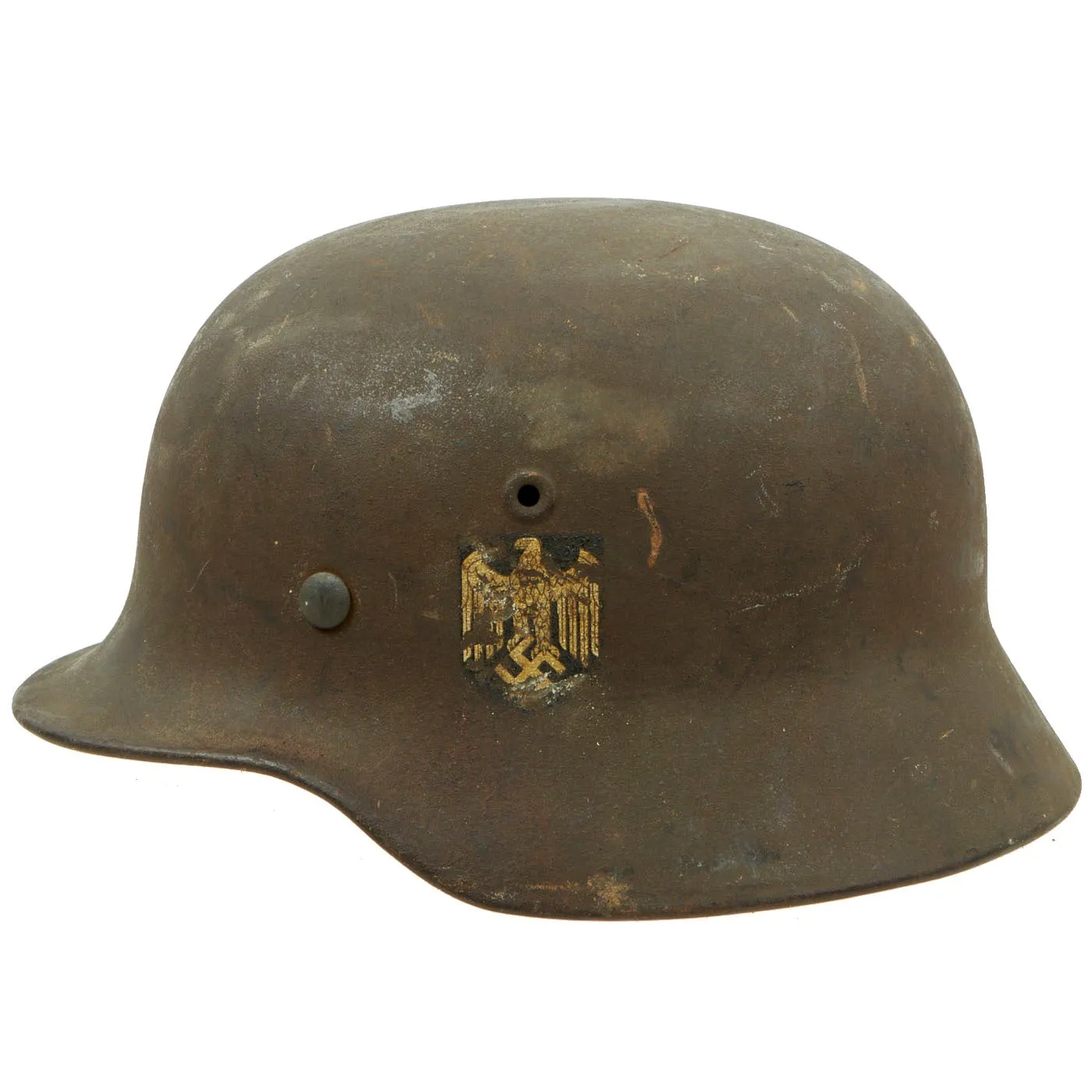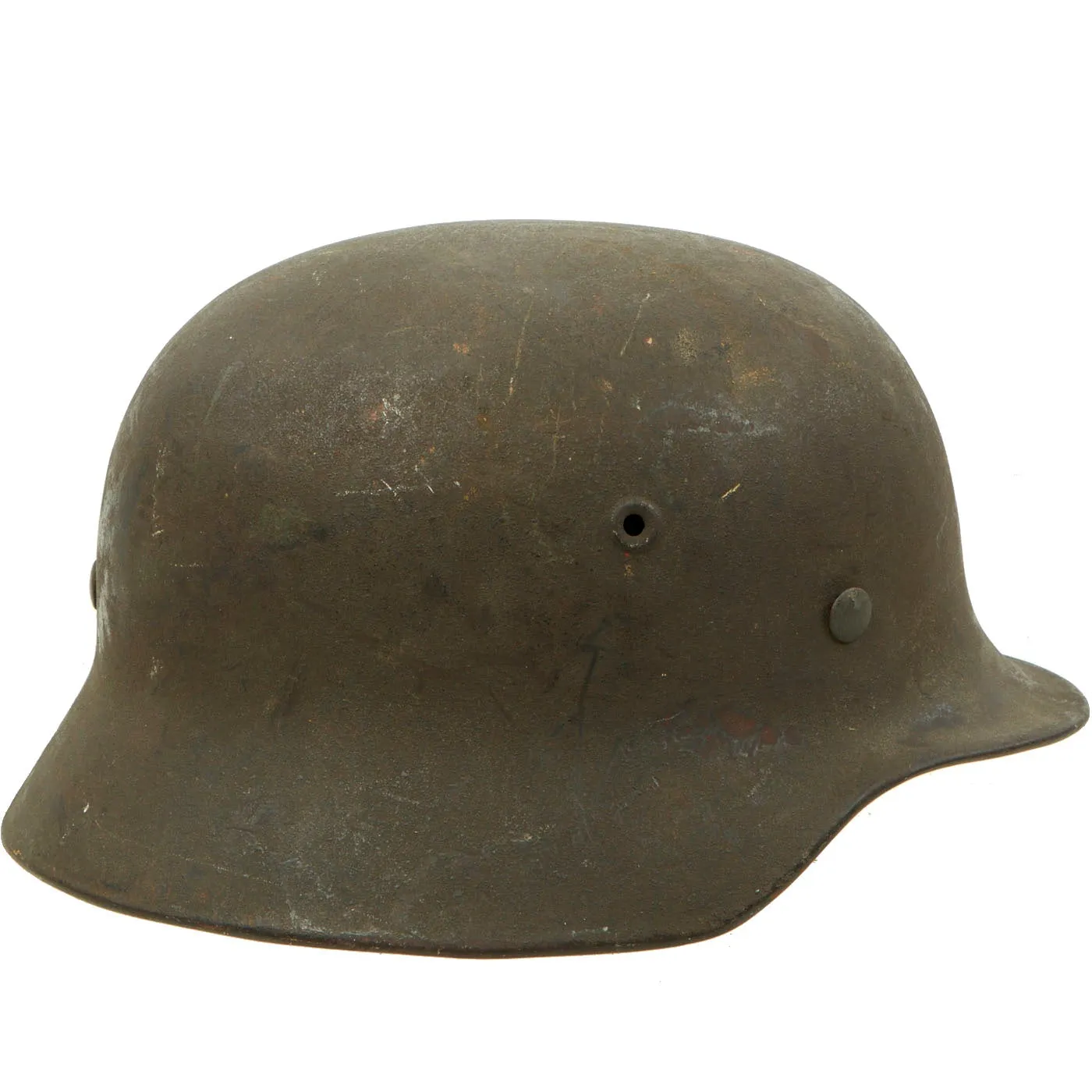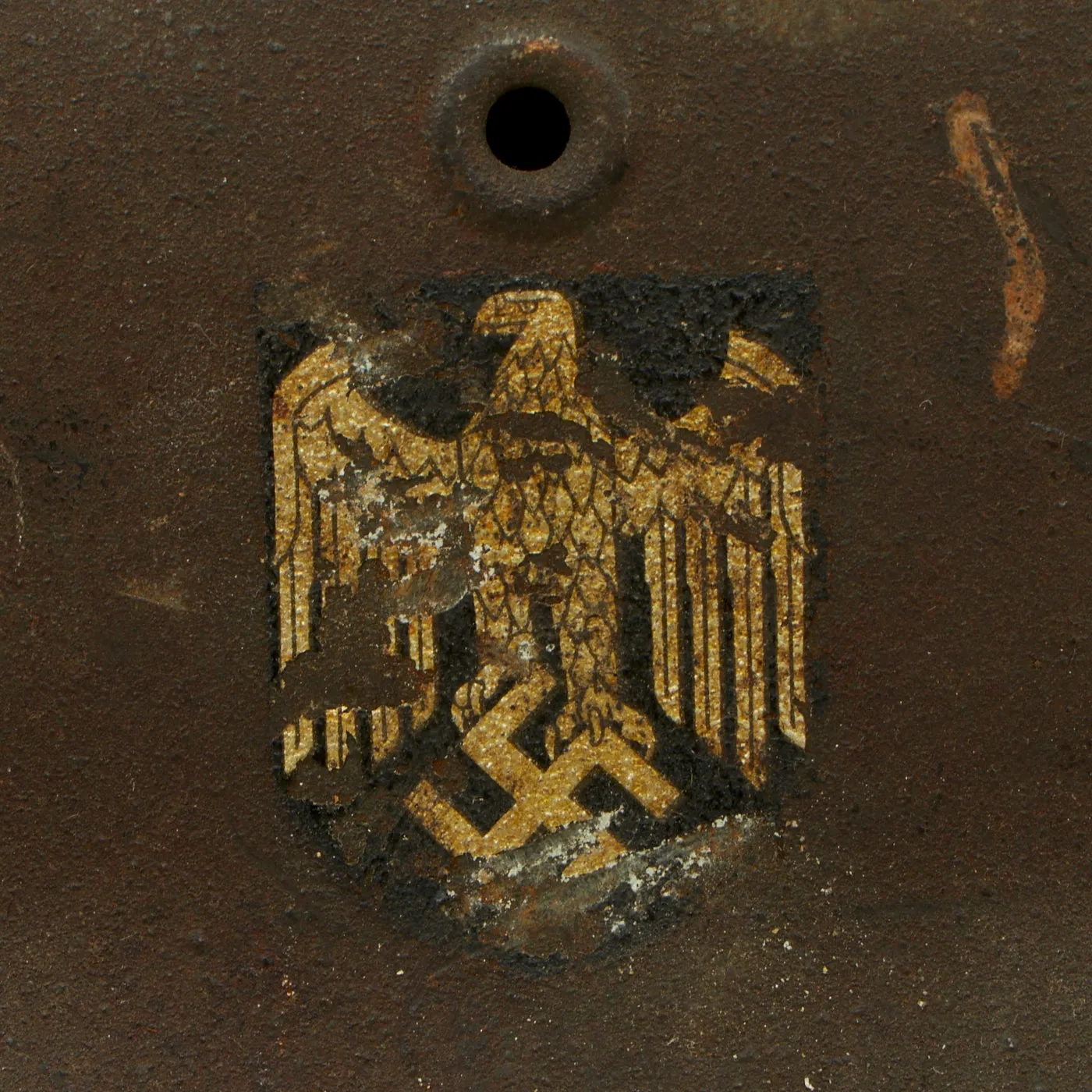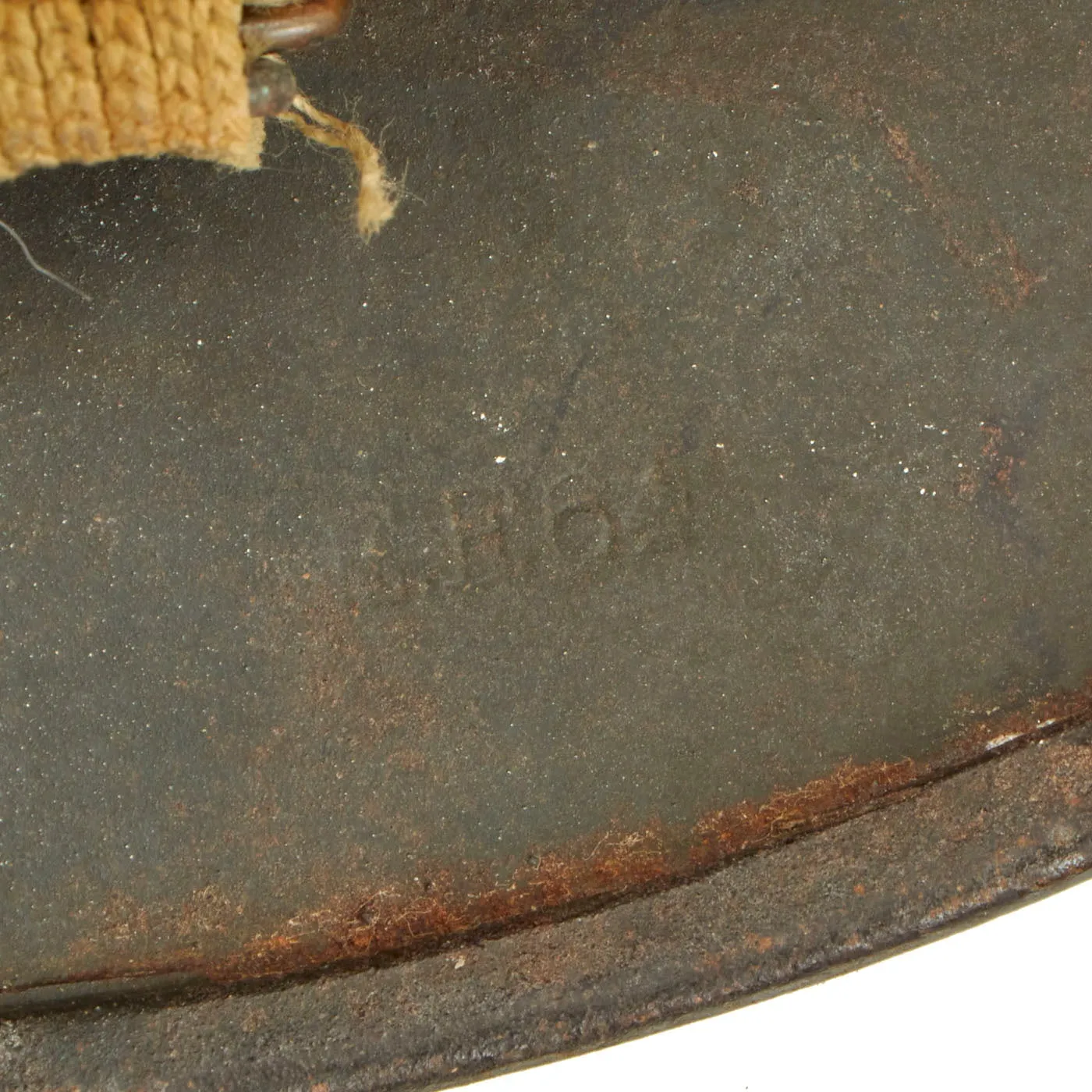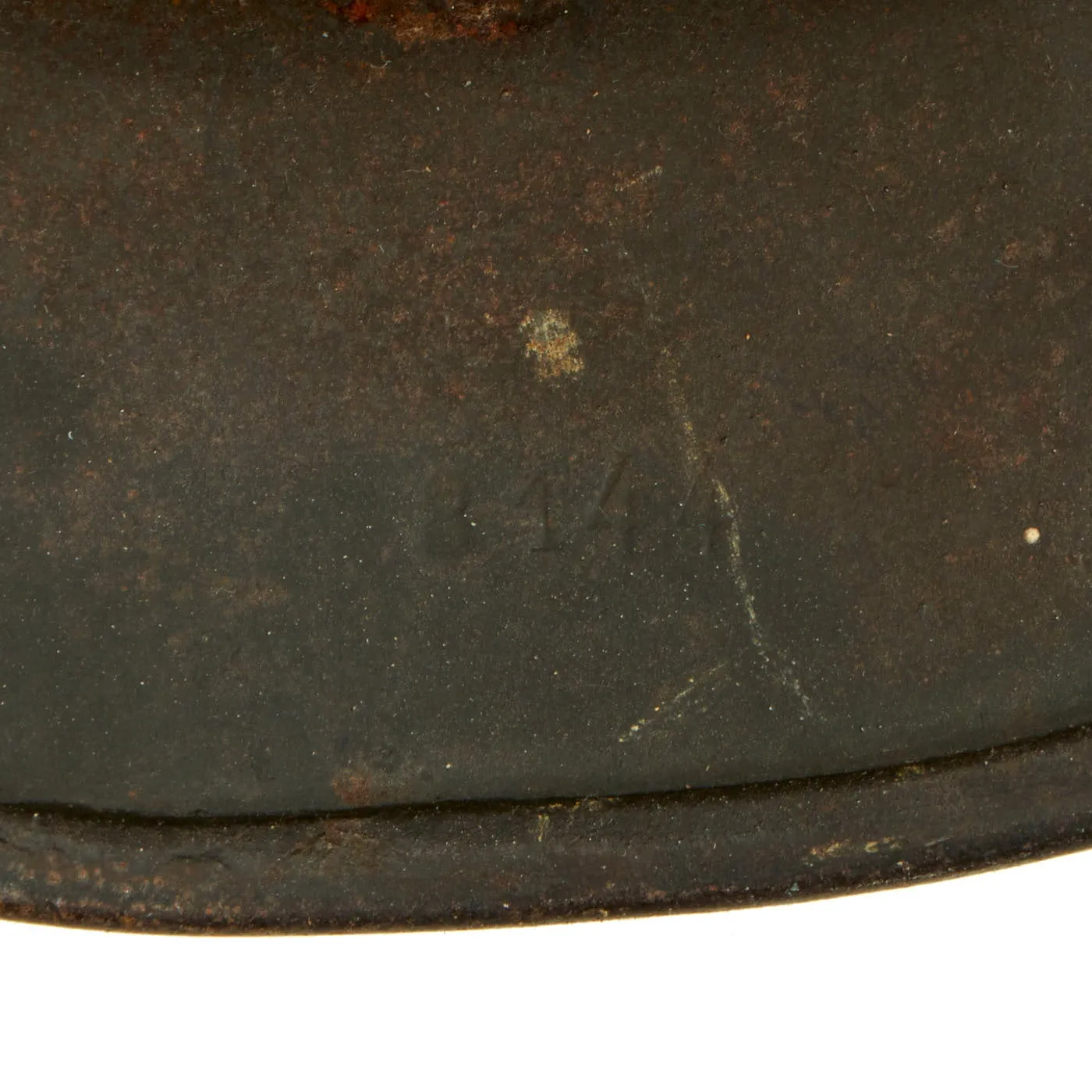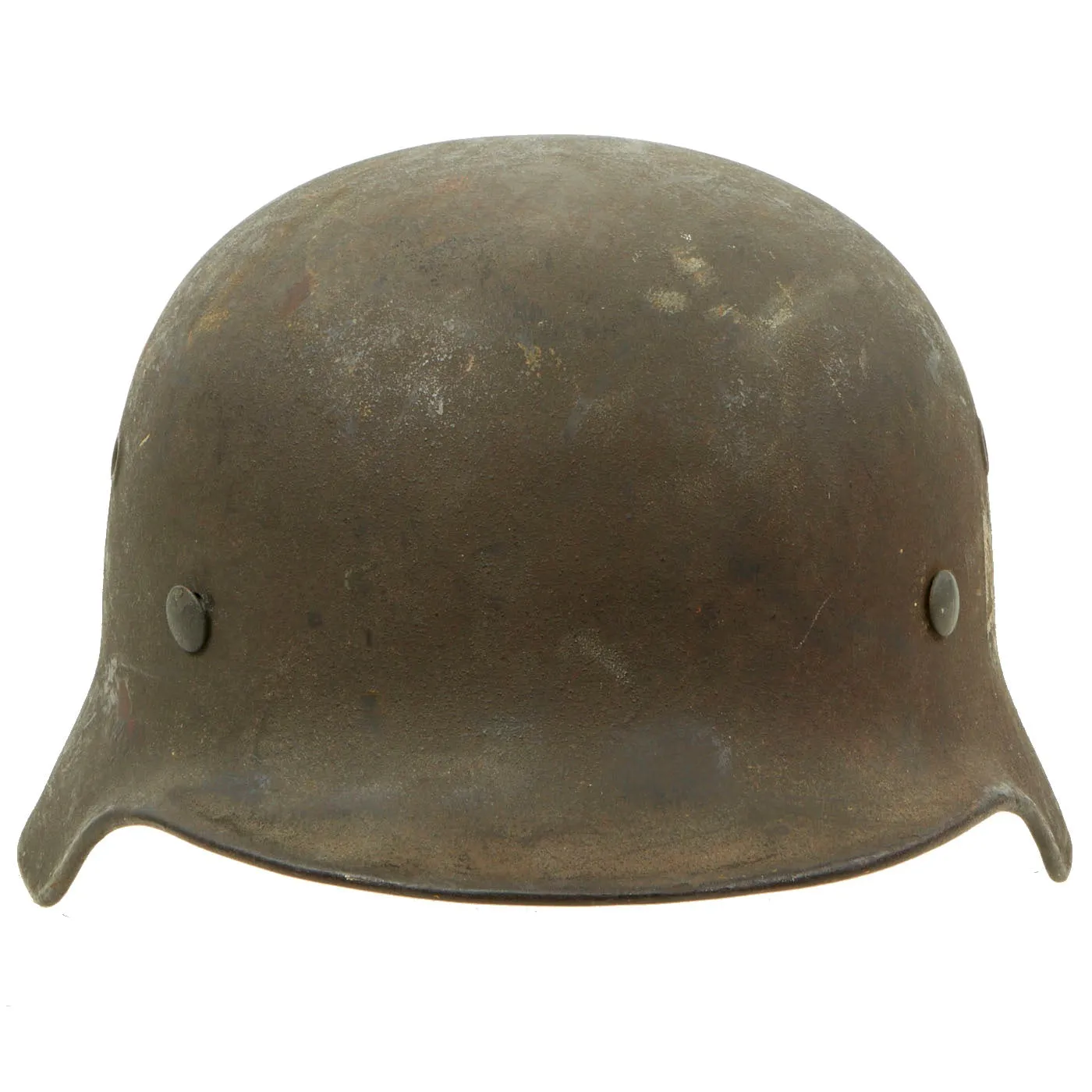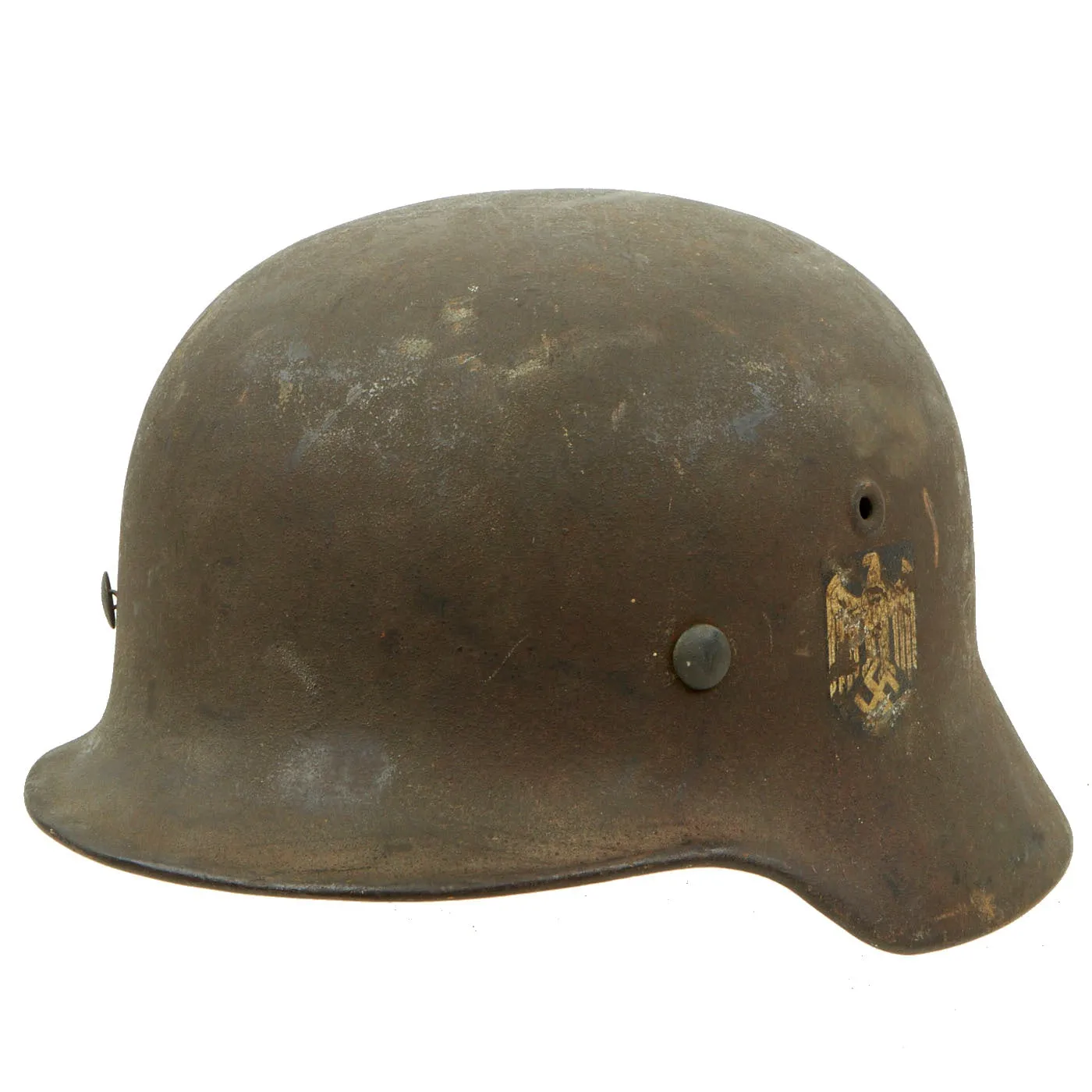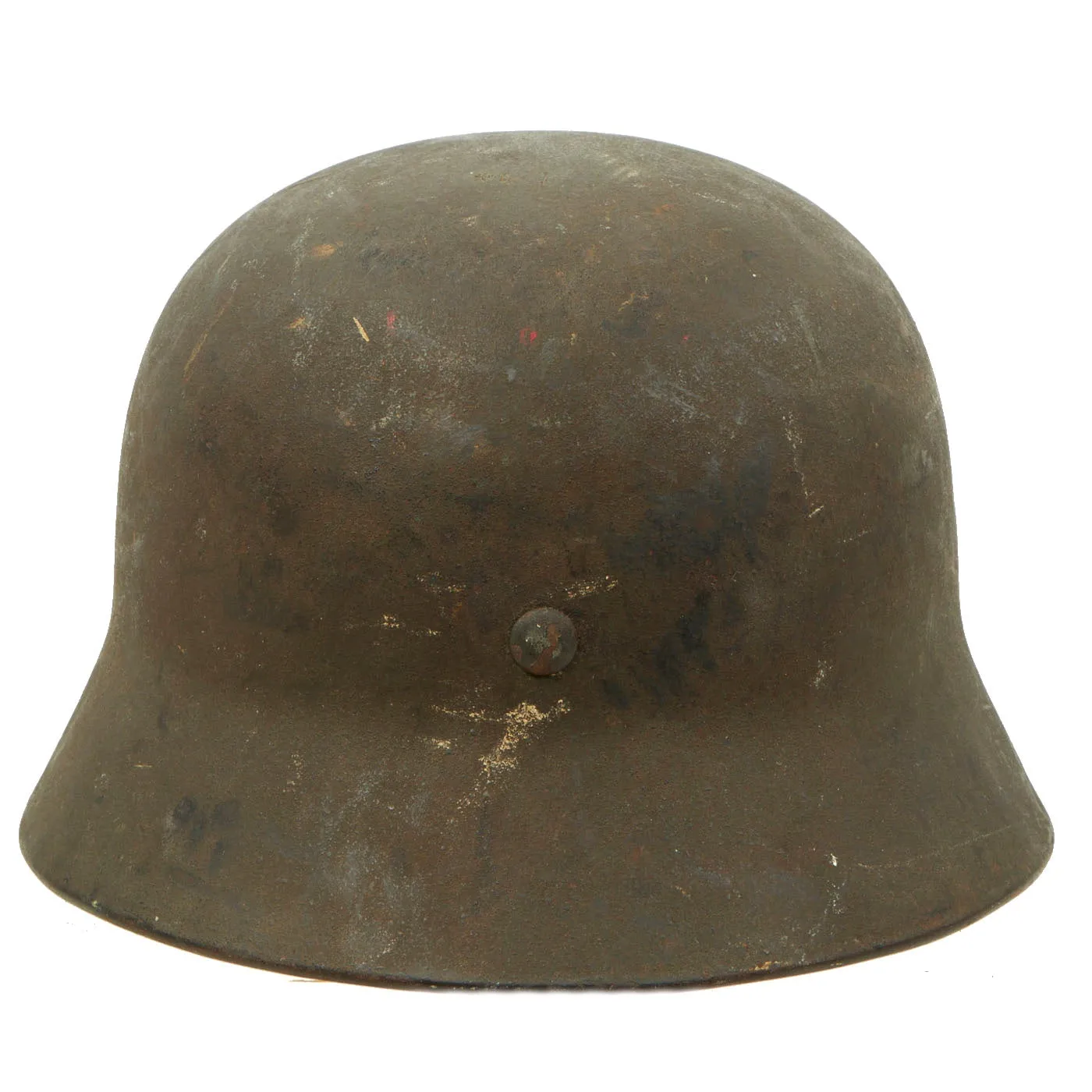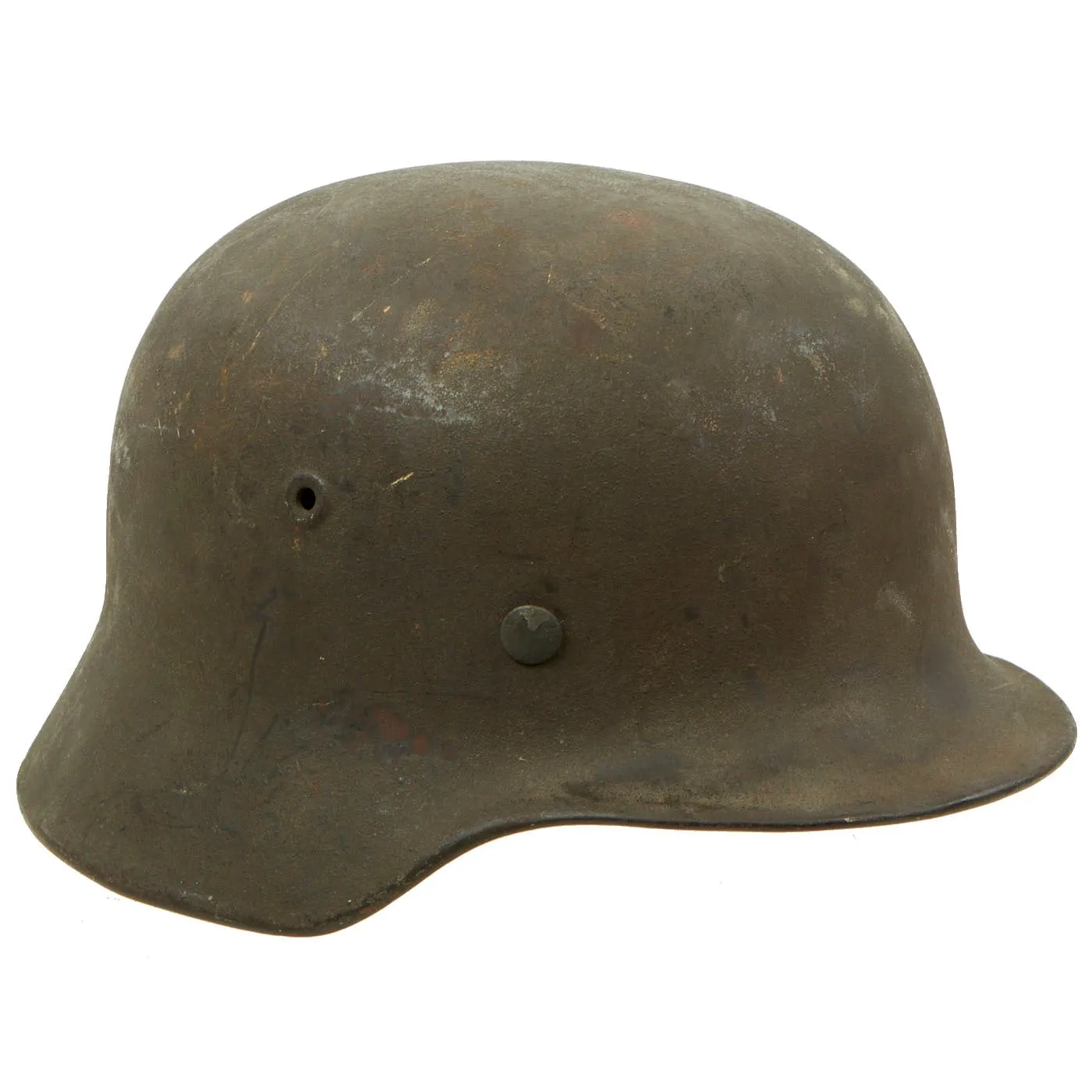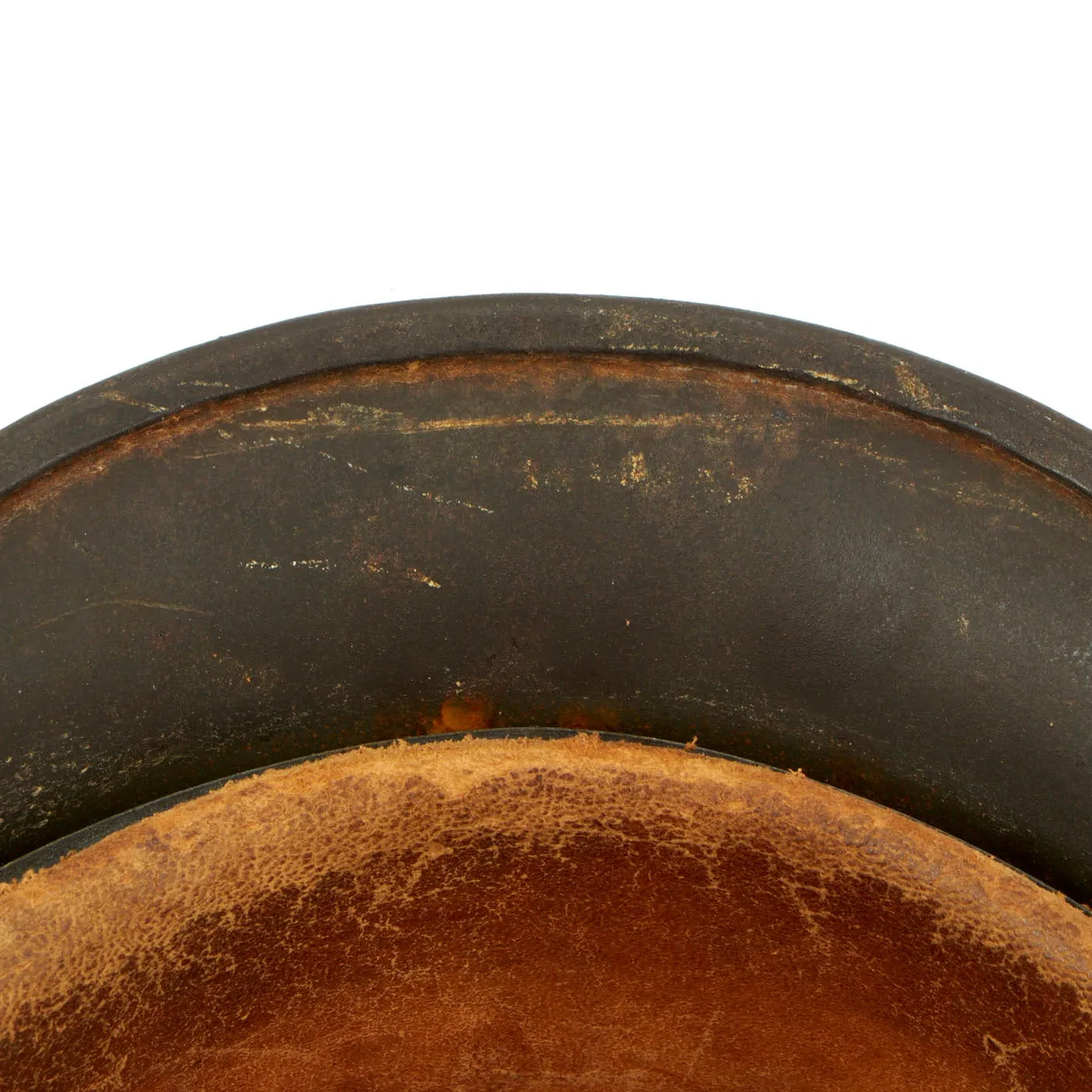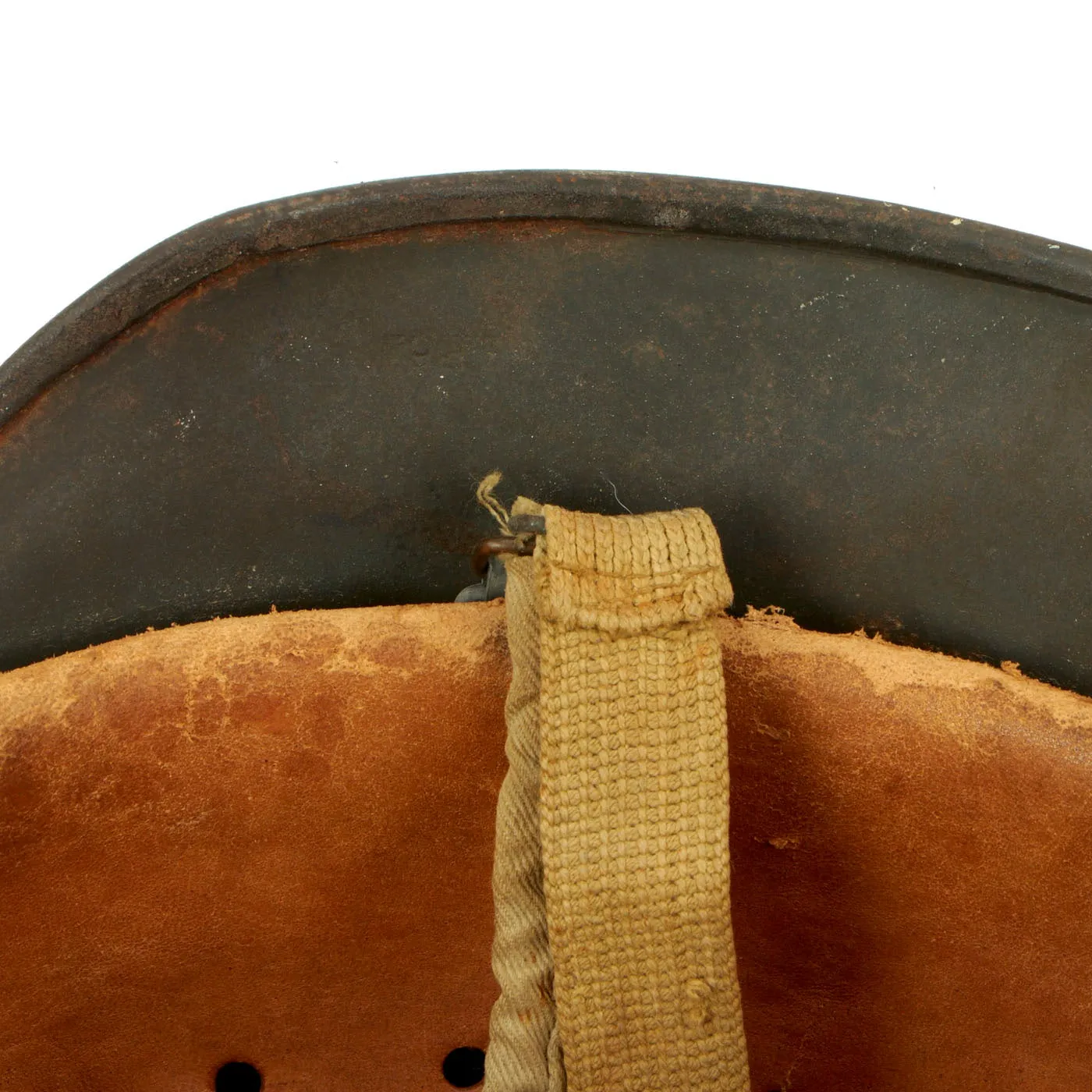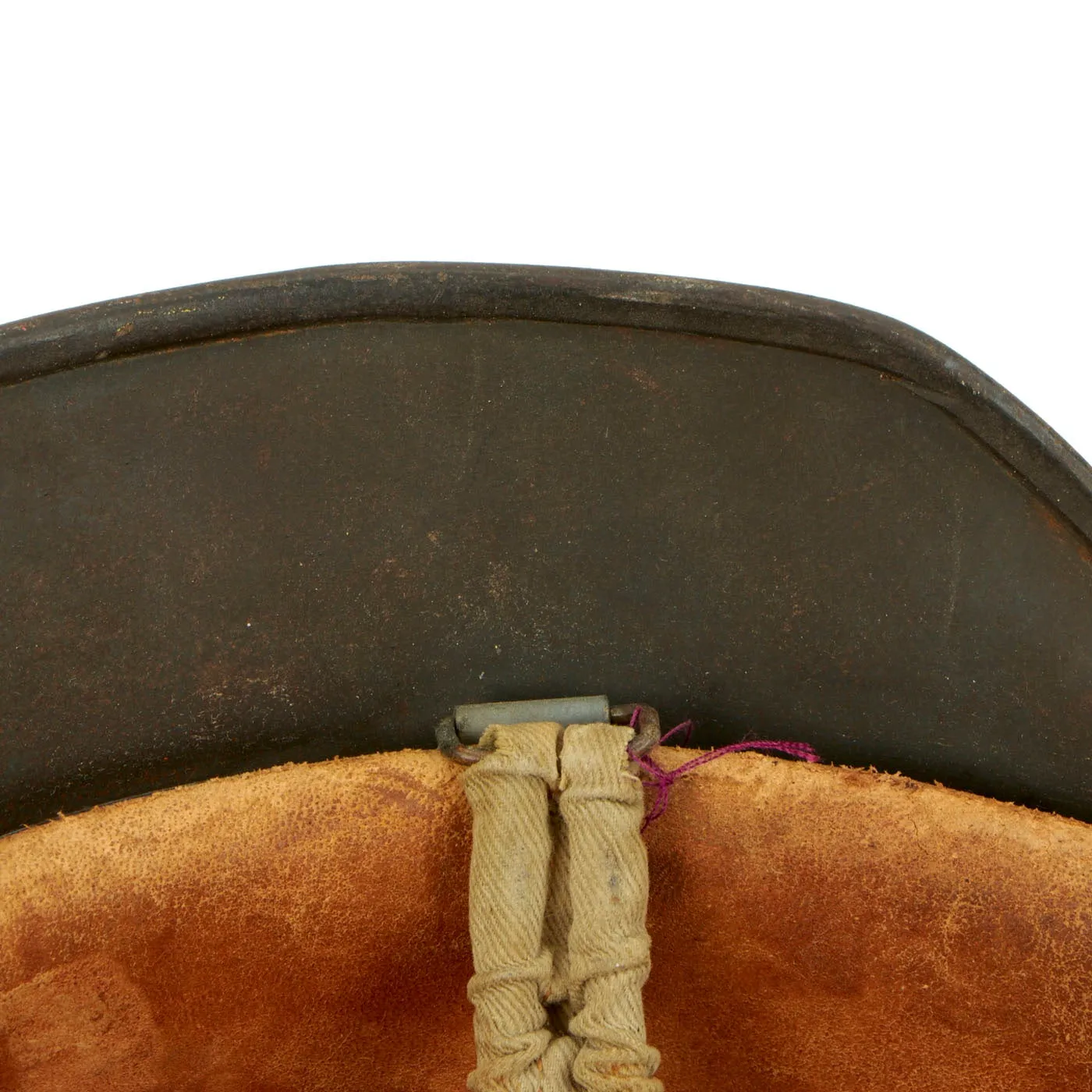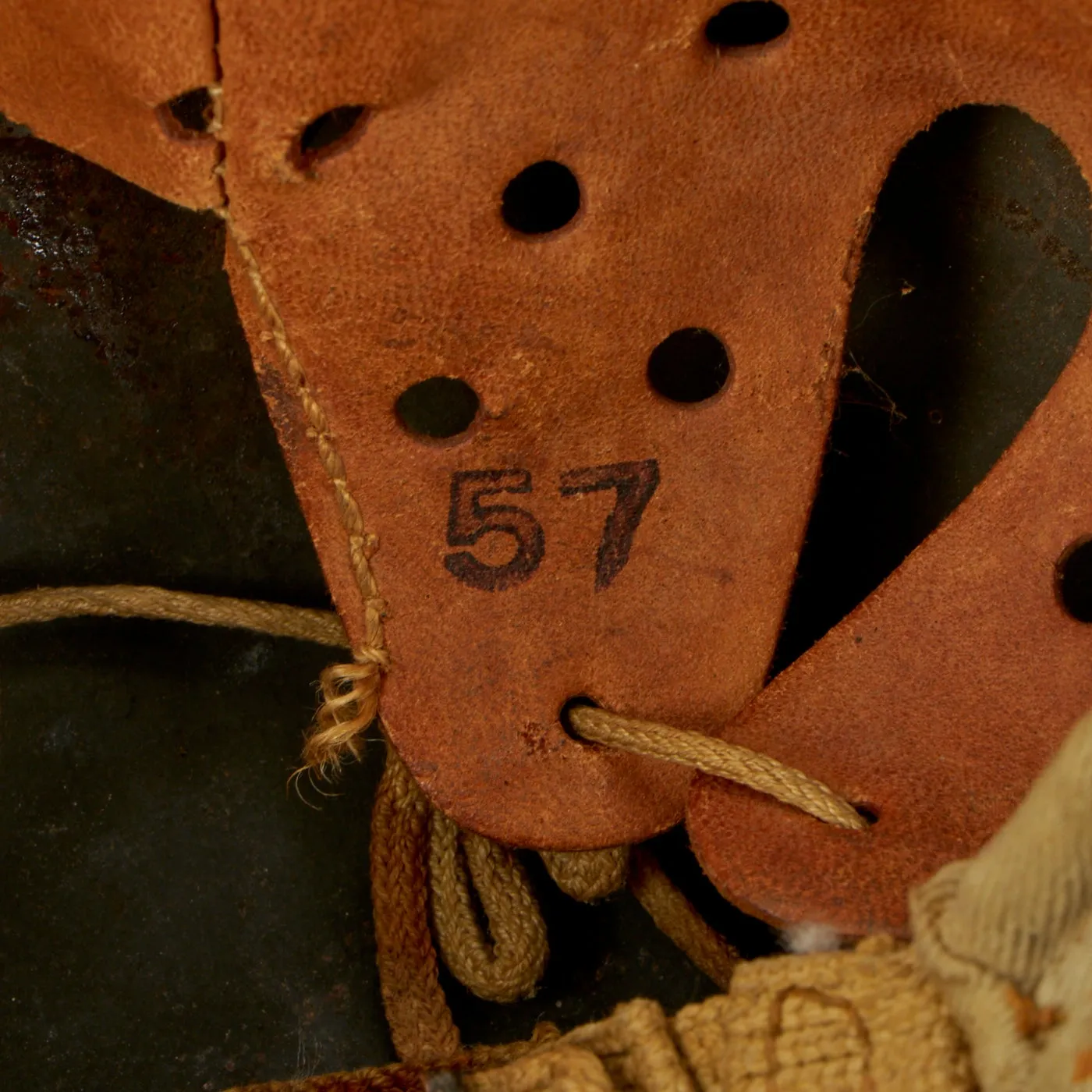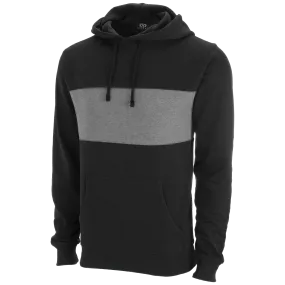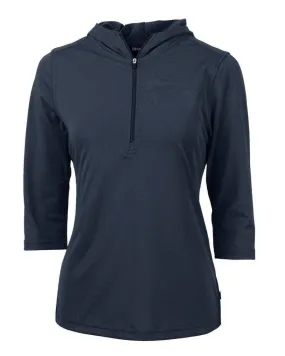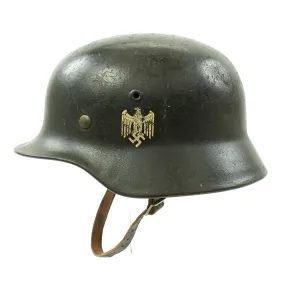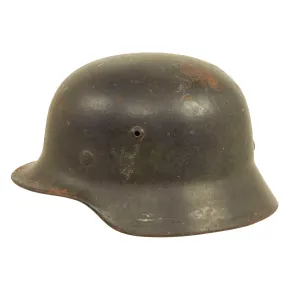Original Item: Only One Available. This is a very nice original example of a German WWII M40 Heer (Army) helmet, but with a twist! This stamped sheet steel construction helmet retains most of its original paint but shows wear and use. The left side of the helmet features a nice Heer eagle decal, retained at about 70%.
Here’s where this helmet gets interesting! It has a very nice original liner, however the original standard leather chinstrap has been replaced with a WWII British Brodie helmet first pattern chinstrap! It appears as if it was done by the soldier the helmet was issued to. It definitely adds a nice personal touch and probably was more comfortable to wear! No story on how the German soldier came across the chinstrap, but we are sure you can imagine how.
The reverse, interior, neck guard apron is batch number stamped 8114, and the interior, left side, apron has a stamped manufacturer's code and size, E.F.64 indicating that indicating it was manufactured by Emaillierwerke AG, of Fulda Germany in size 64. Size 64 is a nice medium size that can accommodate liners from 56cm to 57cm or US 7 to 7 1/8. Size 64 shells are harder to find and are therefore more valuable to a collector.
All three liner retaining pins are intact, and retain most of their original lightly textured paint. The interior of the helmet still has the original M31 leather liner with all eight of it's fingers intact and in good shape, with the top tie still present. The mid-war Galvanized steel liner band is marked on the left side with 64 n.A / 57, indicating that it is a size 59 liner for a size 66 shell. There is also a clear 57 stamp on the leather. The right side displays the full manufacture information, as well as a date:
B. & C.
B E R L I N
1941
This liner was made by Biedermann & Czarnikow, a German company who later moved operations to Łódź in occupied Poland to take advantage of the slave labor in the ghetto located there. NSDAP authorities renamed Łódź to Litzmannstadt in honor of the German General Karl Litzmann who had captured the city in the previous World War.
Overall a very interesting M40 Single Decal Heer Army helmet, complete with liner and British Brodie Chin STrap. This is an item that will only continue to appreciate in value over time.
The first "modern" steel helmets were introduced by the French army in early 1915 and were shortly followed by the British army later that year. With plans on the drawing board, experimental helmets in the field, ("Gaede" helmet), and some captured French and British helmets the German army began tests for their own steel helmet at the Kummersdorf Proving Grounds in November, and in the field in December 1915. An acceptable pattern was developed and approved and production began at Eisen-und Hüttenwerke, AG Thale/Harz, (Iron and Foundry Works), in the spring of 1916.
These first modern M16 helmets evolved into the M18 helmets by the end of WWI. The M16 and M18 helmets remained in usage through-out the Weimar Reichswehr, (National Defence Force, Circa 1919-1933), era and on into the early years of the Third Reich until the development of the smaller, lighter M35 style helmet in June 1935.
In 1934 tests began on an improved Stahlhelm, whose design was a development of World War I models. The Eisenhüttenwerke company of Thale carried out prototype design and testing, with Dr. Friedrich Schwerd once again taking a hand.
The new helmet was pressed from sheets of molybdenum steel in several stages. The size of the flared visor and skirt was reduced, and the large projecting lugs for the obsolete armor shield were eliminated. The ventilator holes were retained, but were set in smaller hollow rivets mounted to the helmet's shell. The edges of the shell were rolled over, creating a smooth edge along the helmet. Finally, a completely new leather suspension, or liner, was incorporated that greatly improved the helmet's safety, adjustability, and comfort for each wearer. These improvements made the new M1935 helmet lighter, more compact, and more comfortable to wear than the previous designs.
The Army's Supreme Command officially accepted the new helmet on June 25, 1935 and it was intended to replace all other helmets in service.
More than 1 million M1935 helmets were manufactured in the first two years after its introduction, and millions more were produced until 1940 when the basic design and production methods were changed to reduce production time. This mainly included having the vent hole being stamped directly into the shell, as opposed to being riveted on later.




